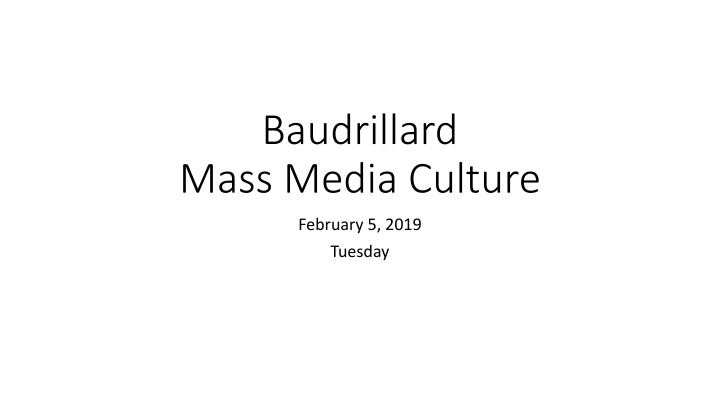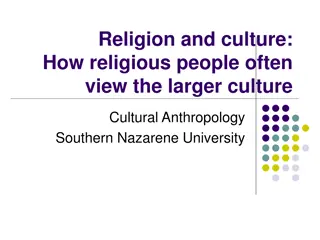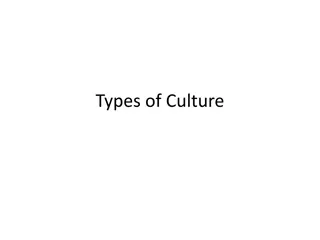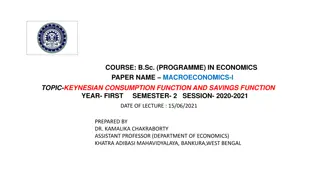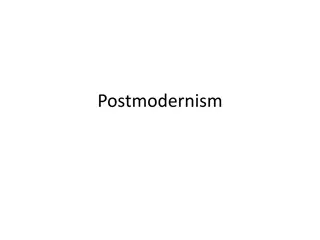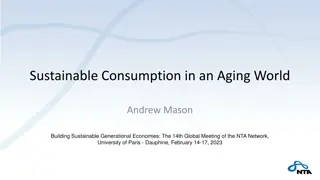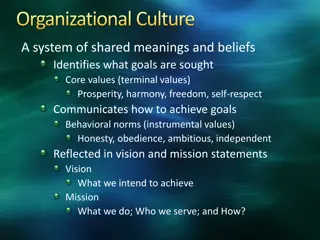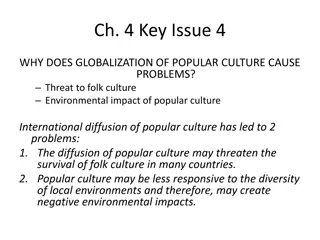The Influence of Consumption on Culture According to Baudrillard
Baudrillard views consumption as more than simply acquiring goods; it is a system of signs, manipulation, and communication. In the modern consumer society, consumption extends beyond goods to services and human relationships. Consumption itself becomes the commodity, exemplified in advertising. Baudrillard also discusses the transformative nature of consumption on culture, leading to the commodification of art and the constraining yet magical world of consumption.
Download Presentation

Please find below an Image/Link to download the presentation.
The content on the website is provided AS IS for your information and personal use only. It may not be sold, licensed, or shared on other websites without obtaining consent from the author.If you encounter any issues during the download, it is possible that the publisher has removed the file from their server.
You are allowed to download the files provided on this website for personal or commercial use, subject to the condition that they are used lawfully. All files are the property of their respective owners.
The content on the website is provided AS IS for your information and personal use only. It may not be sold, licensed, or shared on other websites without obtaining consent from the author.
E N D
Presentation Transcript
Baudrillard Mass Media Culture February 5, 2019 Tuesday
From Introduction by George Ritzer to The Consumer Society by Jean Baudrillard To Baurdriallard, consumption is not merely a frenzy of buying a profusion of commodities, a function of enjoyment, an individual function, liberating of needs, fulfilling of the self, affluence or the consumption of objects. Consumption is an order of significations in a panoply of objects: a system, or code, of signs: an order of manipulation of signs ; the manipulation of objects as signs; a communication system (like a language); a system of exchange (like primitive kinship); a morality that is a system of ideological values; a social function; a structural organization; a collective phenomenon; the production of differences; .an unconscious constraint on people both from the sign system and from the socio-economic-political system; and a social logic.
..to Baudrillard rather consumption is a structure that is external to and coercive over individuals Individuals are coerced into using that system. The use of that system via consumption is an important way in which people communicate with one another. In the modern consumer society, we consume not only goods but also human services and therefore human relationships .Ultimately, what is being consumed in the consumer society is consumption itself. The last point is best exemplified by advertising. In watching or reading advertisements people are consuming them: they are consuming consumption.
Baudrillard seeks to extend consumption from goods not only to services but to virtually everything else the idea that consumption has been extended to all of culture; we are witnessing the commodification of culture .Art for example has increasingly become indistinguishable from any other commodity .. More generally, in addition to its constraining effect, consumption is described by Baudrillard as a magical, miraculous, fantastic world. The new means of consumption offer the consumer fantastic, mythical images (signs) and they are objective structures that constrain the behavior of consumers. >>From Dischantment to Re-chantment of the world through consumption
1. The Neo -or Anachronistic Resurrection Cultural consumption may thus be defined as the time and place of the caricatural resurrection, the parodic evocation of what already no longer exists of what is not so much consumed as consummated (completed, past and gone). Consumption, too, is thoroughly imbued with this anachronistic substance.
2. Cultural Recycling Definition: update knowledge, expertise, engage in retraining, etc. up to speed, to mind the cycle of fashion, fashion is arbitrary, transient, cyclical This principle of organization governs all mass culture today. What all the acculturated receive is not culture but cultural recycling We can see that the problem of the consumption of culture is not, properly speaking, linked to cultural contents that work (cultural work) is condemned to be merely an ephemeral sign because it is produced in what is today the universal dimension of production: the dimension of the cycle and recycling. Culture is no longer made to last (cf. planned obsolescence)
3. The Tirlipot and the Quiz Machine, or the Lowest Common Culture We can see that the term culture is potentially very misleading. This cultural consomme this digest /repertoire of coded questions/answers, this LCC (lowest common culture), is to culture what life insurance is to life: it is there to ward off its danges, and on the basis of the denial of a living culture, to glorify the ritualized signs of culturalization. However, this LCC, which draws its sustenance from an automatized question-and-answer mechanism, has many affinities with the culture of the schoolroom. Indeed, all these games have the archetype of the examination as their mainspring. The examination is the pre-eminent form of social advancement.
Making a purchase is in this context akin to a radio quiz. Primarily the response to a question, a response which engages the individual in the collective ritual of consumption. It is a game to the extent that every object is always one among a range of variants, between which the individual is required to choose the act of purchasing is a choosing, the determination of a preference precisely as he or she must choose between the answers offered by the quiz game. (Cf. Pierre Bourdieu, Distinction )
